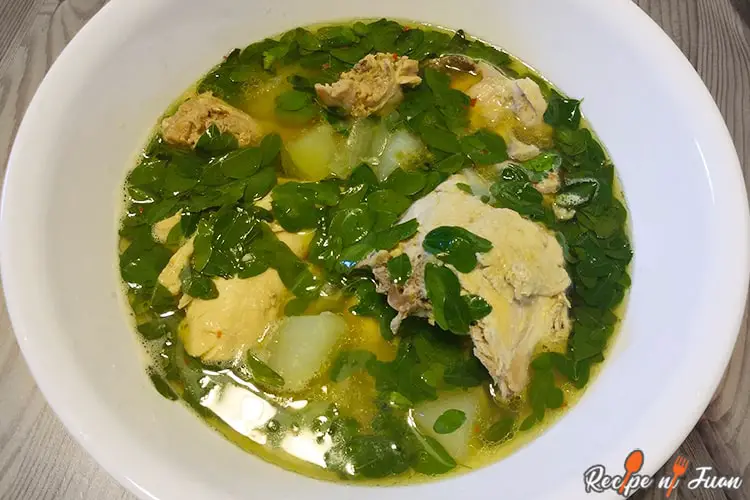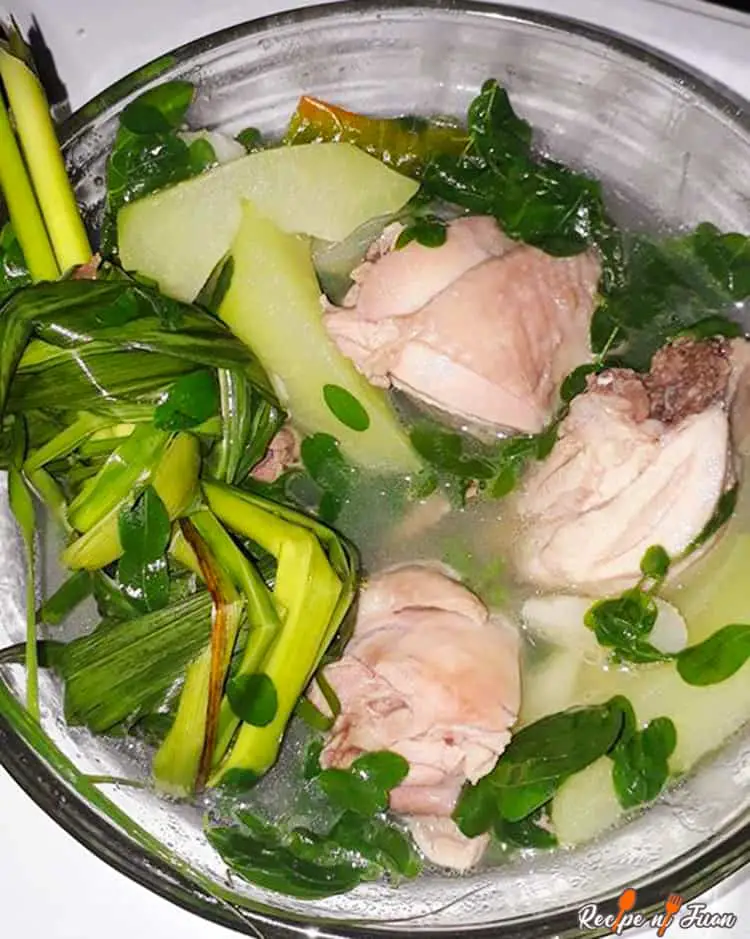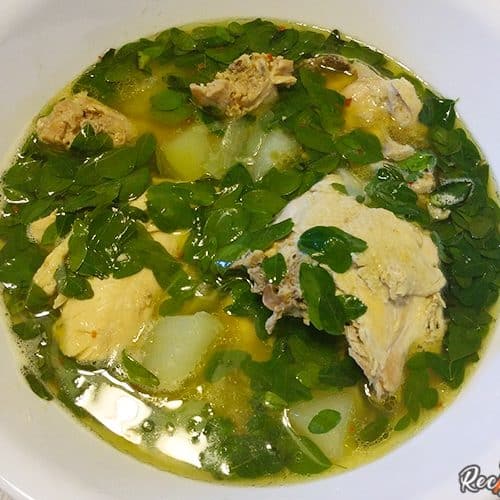Kinamunggayang Manok Recipe: Chicken with Banana blossom
One glance at Kinamunggayang Manok and you will think that it is Tinola with Malunggay (morica) leaves.
That may be true, but only partially, as Kinamunggayang Manok is a version of Tinola in the Visayas.
The recipe is called Kinamunggayan as the Visayan term for Malunggay is Kamunggay.

The recipe simply includes native chicken, malunggay and puso ng saging (banana blossom).
Similar to the Tinola, this Kinamunggayang Manok recipe is easy to follow, as the ingredients and the preparation are accessible.
It is recommended that you use the native chicken variety for this dish as it will make the dish a lot tastier.
If you are going to cook this dish using native chicken, though, it is better if you cook using a pressure cooker, as a native chicken is really on the gummy, hard-to-chew side of things.
If you don’t have a pressure cooker, then make sure to give enough time for the native chicken to be tender.
Also, if a Native Chicken is inaccessible to where you are, the regular farm-raised chicken which can be bought from the market and supermarket can also be used.
Also check out our authentic Sinampalukang Manok Recipe

Check out our new cookbook
Bitemybun's family recipes with complete meal planner and recipe guide.
Try it out for free with Kindle Unlimited:
Read for freeIn this post we'll cover:
Kinamunggayang Manok Preparation Tips
Another ingredient which separates the kinamunggayang manok recipe from the others is the presence of banana blossom.
One has to make sure though that the sap is thoroughly squeezed out from the mix as the sap will make the broth bitter.
The malunggay leaves included in this leaves also add to the health benefits of this recipe.
Served generously into the dish, and this can act as an absorbent to the oil coming from the chicken.


Kinamunggayang manok recipe
Ingredients
- 1 kg Native Chicken cut into serving pieces
- 1 medium banana blossom (puso ng saging) shredded
- 1½ cups malunggay leaves
- 2 cups chicken broth
- 6 cups water
- 1 medium onion sliced
- 4 cloves garlic crushed
- 3 tbsp cooking oil
- 1½ tbsp fish sauce
- ¼ tsp ground black pepper
- Salt to taste
Instructions
- Soak the banana blossom in brine (combine 2 cups water and 1 tablespoon salt) for at least 3 hours. Let the sap out by squeezing the banana blossom. Set aside.
- Heat the oil in a cooking pot.
- Saute the garlic and onion.
- Add the chicken pieces. Cook for 2 to 3 minutes or until the chicken turns light brown.
- Put the chicken broth and 3 cups water. Let boil. Simmer covered for 30 to 40 minutes. Add water if necessary.
- Put the shredded banana blossom. Stir and cook for 2 minutes.
- Add the malunggay leaves. Cook for a minute.
- Pour-in the fish sauce and add the ground black pepper.
- Transfer to a serving plate.
- Serve
As Kinamunggayang Manok recipe is supposed to be a brothy one, be generous on the broth. You can use plain water or chicken broth for the dish.
Serve this hot with rice as this is the perfect comfort food in the rainy season and the perfect dish to make any lunch or dinner meal special.
Don’t Forget to drop your comments and ideas below. Thank You!
If you’re getting the banana blossoms and want to do something more with them, check out this recipe as well: Pork Humba sweet, salty & sour pork belly
Check out our new cookbook
Bitemybun's family recipes with complete meal planner and recipe guide.
Try it out for free with Kindle Unlimited:
Read for freeJoost Nusselder, the founder of Bite My Bun is a content marketer, dad and loves trying out new food with Japanese food at the heart of his passion, and together with his team he's been creating in-depth blog articles since 2016 to help loyal readers with recipes and cooking tips.
